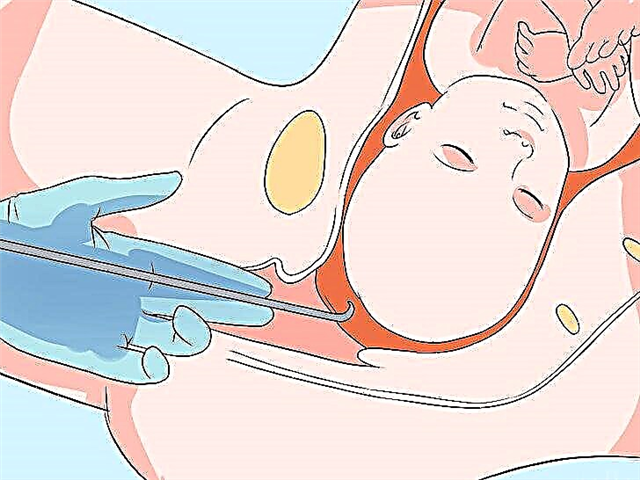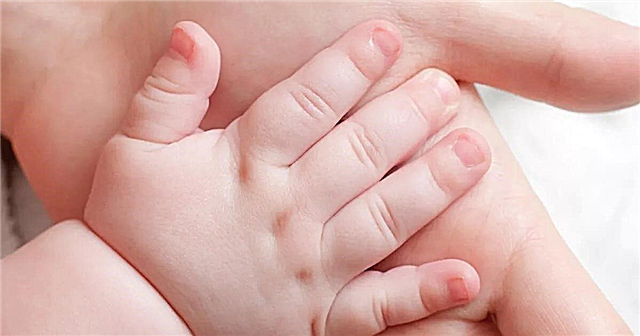Any rash on the body or neck of a child, especially a baby, causes panic in the parents. Often these sores and redness are the result of adult carelessness.

Any sores in a child are cause for concern.
Causes of a rash on a child's neck
Baby skin cells are very sensitive and delicate. Most often, infants up to 1 year old suffer from various types of rashes.
Atopic dermatitis
A serious illness that results from exposure to an allergen. Food or contact with a certain substance can cause an allergic reaction. With food allergies, diarrhea is common.
In babies, an allergic rash first appears on the cheeks, neck, arms. If left untreated, sores and blisters turn into a solid scaly patch.

Allergic rashes are of a different nature
Measles virus
A rash on the neck and body of a child appears in 2-3 days. First, the baby will have a fever, watery eyes and a cough. The first rash forms on the head and neck, then spreads to the shoulders, sternum, body. Gradually the sores spread throughout the body. The rashes are of a different nature.
On a note. The main difficulty of measles is that the disease can give complications to other organs. With age, the disease becomes more severe.
Sweat sweat in the fold on the neck of a baby
If a rash on a child's neck appears in folds in the back, then we are talking about a banal sweating. Such rashes are typical for infants. The fullness or prolonged contact of the skin with synthetic clothing can provoke the appearance of prickly heat.
The rashes are beige or red. If untreated, the surface of the redness increases. The rash is always itchy.
Insect bites
Walking outdoors with your baby every day can lead to contact with insects. If the child is wearing underwear, it is the neck that will suffer from the bites.
Bites of various insects can provoke rashes:
- mosquitoes;
- bedbugs;
- mosquitoes;
- fleas.

The reaction to insect bites in children is different
On a note. Each baby has an individual reaction to bites. These can be small red spots or large swelling spots that begin to itch and itch.
Infectious erythema
There are many reasons provoking the development of infectious erythema. Most often it occurs against the background of a weakened immune system.
Rashes on the neck in infants with erythema are accompanied by additional symptoms:
- chills;
- in severe cases, fever;
- decreased appetite with weight loss.
A red rash protrudes above the level of the skin, rashes bring pain and discomfort, appear on the whole body, including the neck.
Poor hygiene
Often the cause of urticaria, diaper dermatitis or prickly heat is poor hygiene of the child.
You need to monitor the cleanliness of the skin regularly, since babies up to a year spit up. Excess milk flows out and ends up on the neck. If you do not bathe the child every day, irritation and inflammation will appear. Similarly, baby's saliva can also get into the folds of the neck during teething.
Diaper dermatitis
Most often, diaper dermatitis develops in the genitals and buttocks. If untreated and improper hygiene, rashes appear in any folds and folds.

Dermatitis due to poor hygiene can also appear on the neck
The spots will grow and gradually turn into weeping sores.
Other reasons
In babies, rashes can appear as a result of taking medication. Most often, antibiotics provoke an allergic rash to drugs.
On the neck, as in other parts of the body, specific rashes may occur, characteristic of a specific disease (rubella, chickenpox, scarlet fever).
Varieties of rashes
When determining the nature and causes of rashes, first of all, attention is paid to the nature of the sores.
Types of rashes:
- Papules. Small nodules with a homogeneous structure do not differ in color from the skin.
- Spots. Painted in a reddish color, do not stand out on the skin.
- Pustules and blisters. The rash is filled with fluid of various structures and character.
- Erosion. These are skin lesions, from which there is always discharge. Infection is a frequent companion of erosion.
- Comedones. Closed rashes that look like wen.
- Pustules. Reddish seals that have caps on top. There is pus inside the sores.
Whatever the nature of the rash, you need to try to prevent scratching.
General guidelines for parents
Even if a few sores and pimples appear, then you definitely need to show the baby to the pediatrician. It is only allowed to treat it yourself.
Who to contact and how to treat
Before starting treatment, you need to correctly determine the cause of the rash. A visit to the pediatrician is mandatory.

If any rash appears, a visit to the doctor is necessary
Depending on the type of problem, ointments containing glucocorticosteroids and anti-allergy medications may be prescribed. The easiest option is to use ointments or special solutions.
If pathogenic microorganisms become the cause of the rash, then treatment with antiseptic solutions (Chlorhexidine, Dekasan, Furacilin) will be required. The use of such drugs is effective if the cause of the rash is fungal spores.
Skin care
After being examined by a doctor, parents must adhere to the prescribed treatment. For the period until the rash disappears, the baby care regime changes.
Adhere to the following rules:
- the baby is satisfied with daily bathing, air baths;
- cosmetics should be as natural as possible, without additives and fragrances;
- when bathing, decoctions of medicinal herbs are added;
- constantly trim the nails so that the baby does not scratch the rash;
- wash things with natural powders, preferably with baby or laundry soap;
- dress the baby for the weather, do not wrap it up;
- maintain the temperature within 21-23 ° C, humidity - at least 70%.
Such activities will help to quickly cope with the problem.
What not to do
When a rash appears on the skin (regardless of the cause and type), you can not self-medicate. All medications, creams and ointments must be prescribed by the doctor after diagnosing the problem.
You can't:
- lubricate the neck with fat creams, especially if they contain a lot of synthetic components;
- sprinkle redness with talcum powder or cosmetic powders;
- give the baby antihistamines and antibiotics without prescription;
- use lotions and tonics for alcohol;
- scratching the rash;
- apply iodine, potassium permanganate or brilliant green to the rash.
Only a doctor will prescribe competent therapy. Treatment is not required for hormonal rash of newborns, which gradually goes away on its own. In case of allergies, the food and products used in caring for the child are being reviewed.
Prevention of rashes
The skin of the toddler is very susceptible to external factors and changes in conditions of detention. To avoid problems of the children's epidermis, you need to follow simple preventive rules:
- From the first days of life, follow the rules of personal hygiene. After each feeding, or rather regurgitation, cleanse the skin.
- Maintain optimal temperature (+ 21-22 ° C) and air humidity (at least 70%).
- In everything, observe a sense of proportion, for example, do not use soap and shampoo with every bath, so as not to disturb the natural protective layer of the skin.
- Maintain a clean home.
- Avoid allergens.
- If rashes appear, do not delay with the pediatrician's room.

Bathing should be frequent, but without soap
Simple measures will help in most cases to prevent the appearance of various rashes. When they occur, you do not need to self-medicate. Sometimes small sores can indicate a serious illness.



